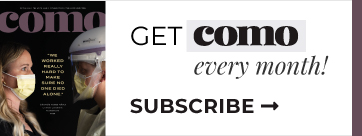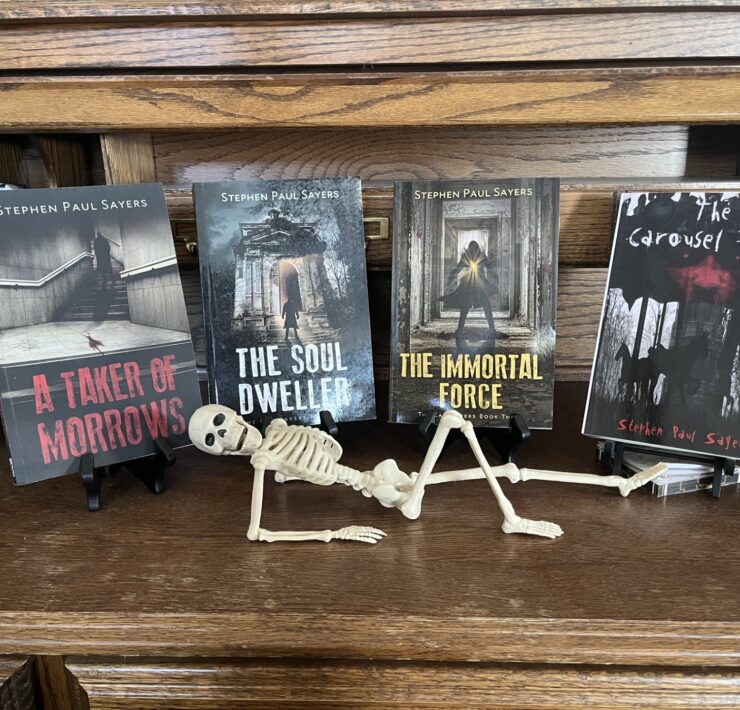If You’ve Been Bitten By a Cat …

Local plastic surgeon needs participants for clinical trial and antibiotic study at MU Health Care
If you’ve been bitten on the arm or hand by a cat in the past 24 hours and the bite area is not showing signs of infection, there might be an immediate spot for you in a research study now under way at University of Missouri Health Care.
Meet Dr. Kevin Klifto, DO, PharmD, a plastic surgery resident who wants to find out if the standard treatment for cat bites — the prophylactic use of antibiotics to prevent infection – is actually helping patients or perhaps contributing to what the World Health Organization calls a pandemic of antibiotic overuse. Klifto needs about 60 to 70 participants, or people whose reflexes weren’t quite ninja-like to avoid getting incised by a cat.
Klifto’s department has a year of funding from The Plastic Surgery Foundation and the American Association for Hand Surgery to perform the clinical trial at MU Health Care.
If you’ve ever been bitten by a cat — and statistics indicate that many of us have — you might have brushed it off as nothing more than an unpleasant experience. After all, the wound might be nothing more than a pinprick, and you and the feline assailant simply go your separate ways. But don’t be fooled. That pinprick might be a direct pathway to soft tissue or a joint that has little protection against the bacteria that was basically injected from the bite. And that’s a big deal, considering that at least one Columbia urgent care clinic treats an average of one cat bite every single day, and University Hospital has at least one cat-bite related infection hospitalization once a week.
“That is the question most people ask us. ‘Are you seeing enough cat bites’ to merit the study?” Klifto said. He says the answer is a resounding “yes.”
How the study works.
The Centers for Disease Control and Prevention reports that there are 400,000 cat bites each year, and as many one-third will require urgent or emergency care as the result of infection, and many of those cases wind up as hospitalization or surgical cases.
The goal of the study is to determine if antibiotics are appropriate or needed to prevent infection following a cat bite injury to the hand or forearm. Klifto’s research participants must have been bitten but not showing signs of infection within the first 24 hours of the bite. Participants will receive wound treatment and management and will be split into one of three treatment groups and receive either a placebo, a one-day treatment of antibiotic followed by four days of the placebo, or a course of treatment of an antibiotic for five days after the bite. Participants will be assessed at various times over the next 30 days to determine the effectiveness of antibiotics as an infection prevention.
“First it will tell us if antibiotics are helpful with the placebo group, and maybe this is what’s best for patients,” he said. Or perhaps there will be a significant difference in infection control between the one-day and the five-day antibiotic treatment. “That may be the answer.”

Klifto grew up near Philadelphia, Pennsylvania, and went to pharmacy school after high school. He grew up in a family of physicians and was always interested in medicine. After two years as a clinical pharmacist in New Jersey, he went to medical school at the Philadelphia College of Osteopathic Medicine, ready to explore a career in medicine that hopefully dovetailed with his pharmacy background.
“I wanted to make sure that whatever I picked, ‘this is 100 percent what I want to do for a living,’” he said. Though he had an interest in internal medicine, Klifto closely watched his brother’s career as a hand surgeon. Then two years into medical school, he decided that plastic surgery was the field for him.
“I thought it was a lot of fun. I could do a lot to help people,” Klifto recalled. He gravitated toward skin grafting, breast reconstruction, and cranial/facial surgery. “I thought it was really, really cool.”
A year of research at Johns Hopkins and a year at the University of Pennsylvania introduced him to even broader applications of plastic surgery, including burn reconstruction, peripheral nerve surgery, treating traumatic injuries, and even penis transplants.
(Did you know that a majority of migraine surgery is done by a plastic surgeon?)
“It became a specialty of problem solving, which is kind of fascinating to me,” he added. He’d experienced some of that growing up as he watched his father work as a radiologist and learning what an MRI showed going on in the brain — “this is normal, that is abnormal.”
“It was a priceless experience and made me who I am today,” Klifto noted.
Klifto is also passionate about research, promoting his field of medicine, and looking for ways to promote better patient care. And that’s how cat bites fit in.
“We see a lot of cat bite infections to the hand, but when we see them, they’re already infected,” he said. At that point, the patient is given antibiotics intravenously, the infected hand is probably “opened and washed out to drain infection from the tissue,” and then followed by as long as a week in the hospital on IV antibiotics.
It’s that serious.
“Cats are very unique in that there’s aways been this whole association with cat bites and infection,” he explained. Dog bites tear the skin; cat bites pierce the skin. “It’s almost like putting bacteria on the tip of a needle and taking it right back out.”
And because the joint inside the hand is “basically a sterile area” and there’s a lack of other tissue in our hands, a cat bite “can put that bacteria right into the joint.”
A cat bite to the hand will result in an infection in 30 to 50 percent of cases, he said. One of the questions Klifto has is at what point is it appropriate to begin treating the bite with an antibiotic if the bite is not showing signs of infection. He refers to a single, randomized control study from 1984 that looked at the effectiveness of antibiotics as a prevention of cat bite infections. And physicians already prescribe antibiotics pre-surgery to ward off possible infections as a standard procedure.

But it’s the propensity to prescribe and administer antibiotics that has created another problem: An alarming and increasing number of pathogens are now resistant to a wide spectrum of antibiotics, which sometimes leads to “super infections” where the antibiotic essentially clears out natural bacteria and allows resistant bacteria to grow disproportionately.
“It’s almost like it’s us versus bacteria,” Klifto explained. “In our body, bacteria are fighting each other. There’s a war on our skin. There’s a war in our gastrointestinal tract.”
Klifto’s interest in prophylactic use of antibiotics led him to emailed the editor of a medical journal and ask if the publication might consider producing a section that evaluates research related to the use of antibiotics and pain medication prior to plastic surgery.
“It led me to wonder, ‘Is it necessary?’ what if you didn’t give a patient antibiotics, because everything is sterile anyway,” he explained. “What are the antibiotics doing on top of all these things that are sterile?”
The editor invited Klifto, a third-year resident, to write a paper that will be published in December.
First of all, if you’re bitten by a cat, or any animal for that matter, Klifto said, get a tetanus shot. Then wash the wound carefully with soap and water.
But cat bites can be especially finicky. In one case, the bite might cause nothing more than some pain and minor bleeding. In other cases, the bite may lead to a serious infection that requires hospitalization and even surgery. Whether orthopedics, plastic surgery, or other specialties end up treating the patient, “It’s almost understood at this point that you have to put someone on antibiotics” for a cat bite, he said.
Klifto’s interest in cat bites is as much as result of his natural curiosity as anything else.
“I learned, ‘This is how this is done,’ and I said, ‘Okay, but is there any research to support that?’” he recalled. “I never automatically took what people told me as being the correct answer — for better or worse.”
He studied the clinical guidelines for treatment of an open fracture, for example, when he was working in a surgical intensive care unit. Standard treatment: that patient gets three days of antibiotics, even though no infection is present.
“I was like, ‘Okay, let’s take a look at the data and the guidelines behind that,’” he said. “But the guidelines weren’t based on published research.”
The 1984 cat bite study that he referred to, which used antibiotics that aren’t even on the market today, had 11 participants, yet that trial led to almost 50 years of using antibiotics preventatively.
“Is this still the right answer?” Klifto asked. “The goal is the provide the best patient care we can. I want what is going to provide the best patient care. It may actually prevent a lot of hospital, emergency room, and urgent care visits.”
The study needs about 60 to 70 participants, with 20 participants in each arm or group of the study. Enrollment opened on September 14.
“It’s something that can get done,” he noted, adding that the study requires a 30-day participation. “If one [cat bite] a day is showing up at urgent care, we can get about 20 per group. That should give us our answer.”
“Now we just need to have the patients come to us,” he says.
And that means more than a few cats also have to, well, find a few dozen people to bite.
WHO CAN PARTICIPATE
Are you older than 18 years of age?
Have you been bitten by a cat?
Was the bite to the hand or forearm?
Was the bite within the past 24 hours?
WHERE SHOULD I GO TO PARTICPATE?
MU Health Care Plastic Surgery Clinic or MU Health Care emergency department (1 Hospital Drive), or urgent care (3916 S. Providence Rd.)
Call Kevin Klifto, DO, PharmD, at 573-884-8176 or email [email protected]
TIME/OTHER COMMITMENTS?
All participants will present for an initial evaluation then follow-up for reevaluations at 2 days, 7 days, 14 days, and 30 days. Compensation is provided.








